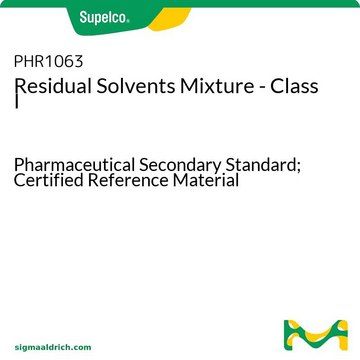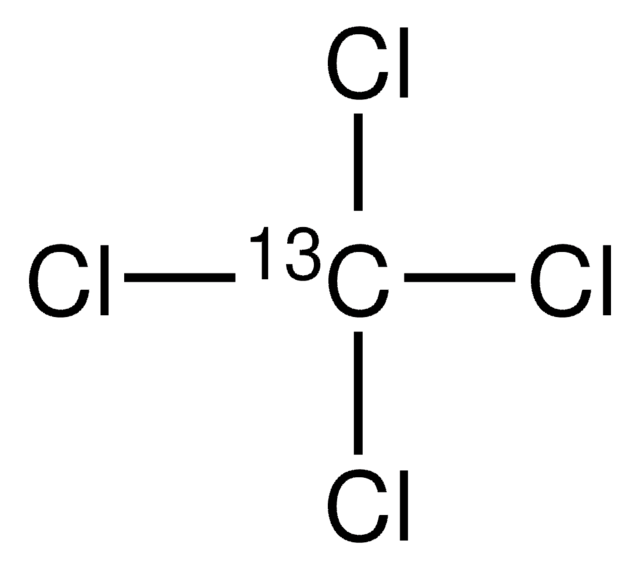02671
Tétrachlorure de carbone
analytical standard
Synonyme(s) :
Tétrachlorométhane
About This Item
Produits recommandés
Qualité
analytical standard
Niveau de qualité
Densité de vapeur
5.32 (vs air)
Pression de vapeur
143 mmHg ( 30 °C)
91 mmHg ( 20 °C)
Essai
≥99.95% (GC)
Durée de conservation
limited shelf life, expiry date on the label
Technique(s)
HPLC: suitable
gas chromatography (GC): suitable
Indice de réfraction
n20/D 1.460 (lit.)
n20/D 1.460
pb
76-77 °C (lit.)
Pf
−23 °C (lit.)
Densité
1.594 g/mL at 25 °C (lit.)
Application(s)
agriculture
cleaning products
cosmetics
environmental
food and beverages
personal care
Format
neat
Chaîne SMILES
ClC(Cl)(Cl)Cl
InChI
1S/CCl4/c2-1(3,4)5
Clé InChI
VZGDMQKNWNREIO-UHFFFAOYSA-N
Vous recherchez des produits similaires ? Visite Guide de comparaison des produits
Description générale
Application
Autres remarques
Mention d'avertissement
Danger
Mentions de danger
Conseils de prudence
Classification des risques
Acute Tox. 3 Dermal - Acute Tox. 3 Inhalation - Acute Tox. 3 Oral - Aquatic Chronic 3 - Carc. 2 - Ozone 1 - Skin Sens. 1B - STOT RE 1 Inhalation
Organes cibles
Liver,Kidney
Code de la classe de stockage
6.1B - Non-combustible acute toxic Cat. 1 and 2 / very toxic hazardous materials
Classe de danger pour l'eau (WGK)
WGK 3
Point d'éclair (°F)
Not applicable
Point d'éclair (°C)
Not applicable
Équipement de protection individuelle
Eyeshields, Faceshields, Gloves, type ABEK (EN14387) respirator filter
Faites votre choix parmi les versions les plus récentes :
Déjà en possession de ce produit ?
Retrouvez la documentation relative aux produits que vous avez récemment achetés dans la Bibliothèque de documents.
Protocoles
US EPA Method TO-17: GC Analysis of Volatiles on VOCOL® after Collection/Desorption using Air Toxics Tube
US EPA Method 8260: GC Analysis of Volatiles on SPB®-624 after Purge & Trap using "K" Trap, Fast GC Analysis
Notre équipe de scientifiques dispose d'une expérience dans tous les secteurs de la recherche, notamment en sciences de la vie, science des matériaux, synthèse chimique, chromatographie, analyse et dans de nombreux autres domaines..
Contacter notre Service technique








